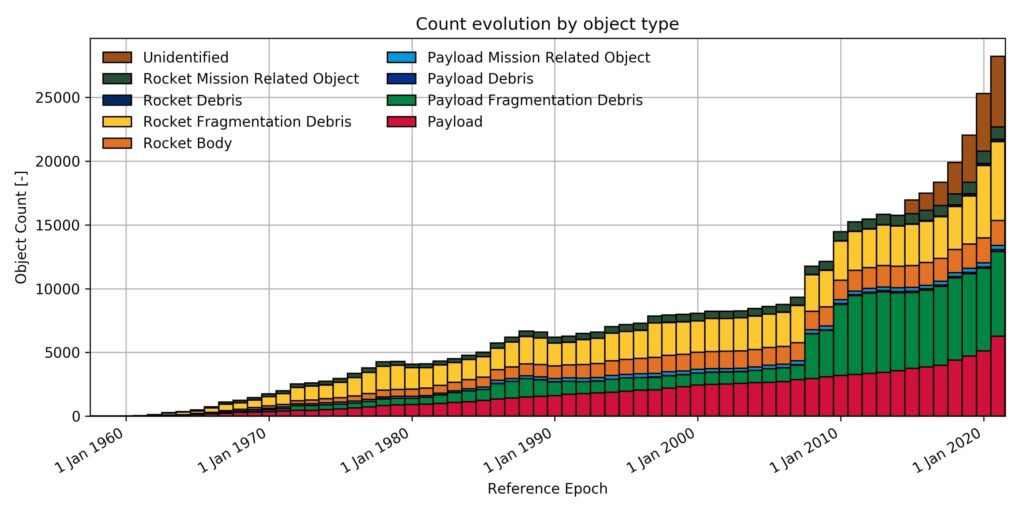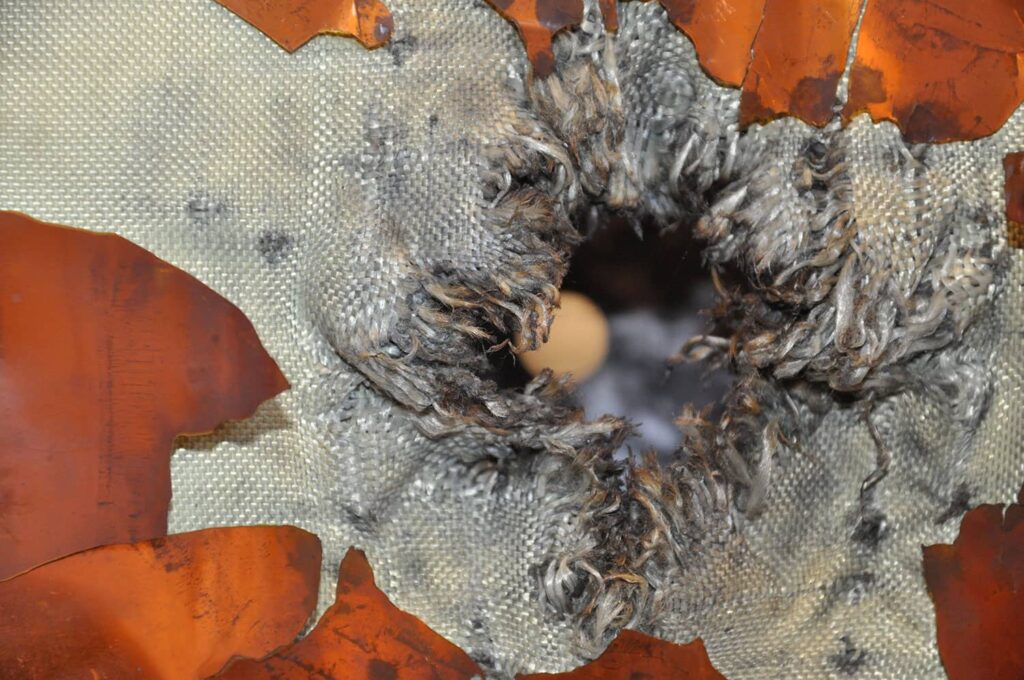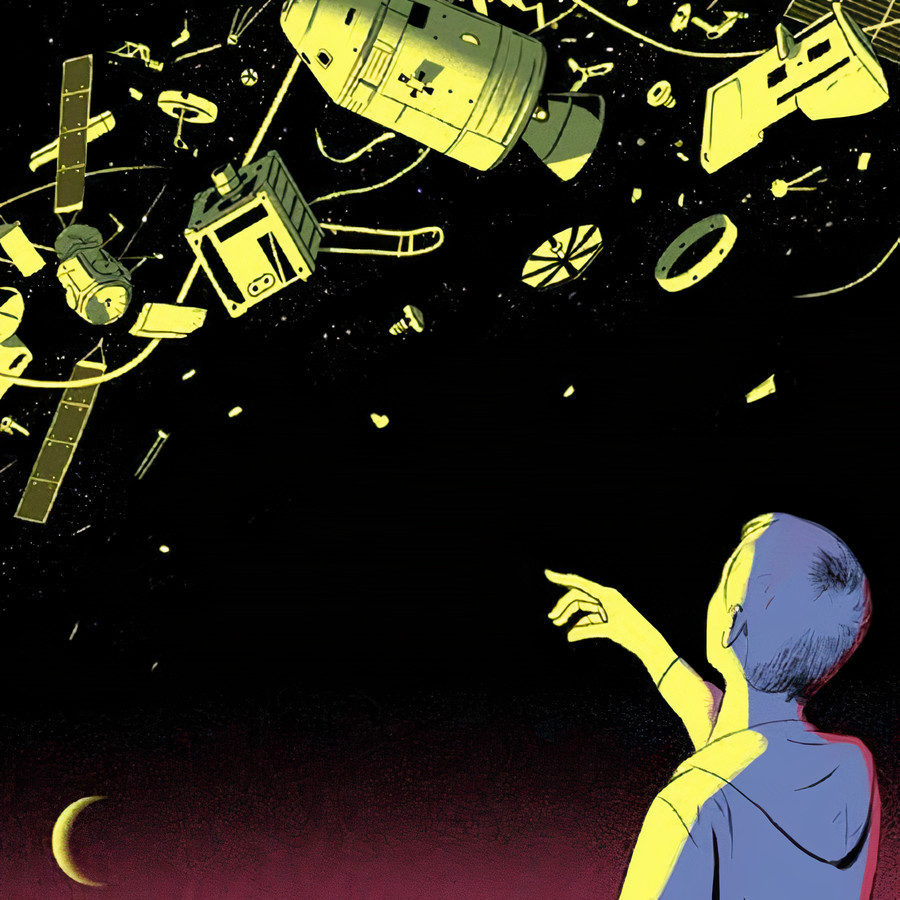Ever since, the first artificial satellite, Sputnik 1 was launched in 1957, we have launched more than 10,000 satellites, with nearly 6,000 still in orbit out of which about only 3,000 are currently operational. The amount of space junk generated by them is so much that it’s now becoming a huge concern to us. In this articles we’ll discuss What is Space Junk and How is it a problem
What is Space Junk or Space Debris?
Space Junk or Space Debris is a term used for defunct man-made objects in space (mainly in Earth’s orbit) which are no longer serve a useful function. These include dilapidated spacecraft, abandoned launch vehicles, and fragmented debris from the breakup of dilapidated rocket bodies and spacecraft. Besides the defunct man-made objects left in space, other debris has also been seen such as paint flecks, solidified liquids expelled from spacecraft, and unburned particles from solid rocket motors.
How much of this debris is around Earth:
Back in 2019, a paper on the distribution of space debris around in orbit around Earth was released. In which they found that: > 1m: 5,400 objects > 10 cm: 34,000 objects (out of which only 2,000 are active satellites) > 1cm: 900,000 objects > 1mm: 130,000,000 objects
Note: For debris object >10cm were collected by US Space Surveillance and from objects <10cm was collected by ESA based on a statistical model. To know more on these stats click here

Now that we know what is Space Debris, but we all might have a question in mind
Why is Space Junk a PROBLEM?
Though the sizes mentioned above may be very small but it can pose a huge collision hazard. This is because the velocity at which these objects travel can be about 7-8 km per second, which be about 12875 kmph. At these speeds, these small flecks of matter can cause huge damages to space crafts and satellites. So if we take a 1-centimeter fleck of paint and it’s traveling at about 7-8kmps then it would inflict the same amount of damage as a 250kg object traveling at 96kmph on Earth.

Though it is lethal enough to kill a person, we already have something else that is protecting us from this space junk or space debris: Our Atmosphere. So anything from the orbit will have to go through it first. One could say it’s “Our Firewall”.
So how does the atmosphere protect us? About 10 minutes before the debris is going to hit the ground, the dense atmosphere starts to heat up and decelerate the debris, resulting in it to melt. But, in the case of very compact and huge satellites that tend to have materials with very high melting points like stainless steel or titanium, so debris of such satellites will hit the ground.

So how much are the chances of being hit by them? To answer this question NASA had released an estimate in 2002 that the odds a person will be hit by space debris is 1 in 3200 people. This means that the chances of any person being struck by it are trillions to one. With odds like this, you are a million times more likely to be struck by lightning.
But, the bigger problem with having so much debris in the orbit it can be dangerous over time, this is known as the
Kessler Syndrome or Kessler Effect
One might ask what is Kessler Syndrome, well it is a theoretical scenario in which the Earth’s orbit is overpopulated with objects and debris, preventing the use of artificial satellites in certain parts of the planet. In this scenario, space pollution is perpetuated by collisions between orbiting objects, creating more debris and thus creating a domino effect of future collisions. This theory was put forth by NASA scientist Donald J. Kessler in 1978.
The direct cause for this scenario is not fully related to the existence of man-made objects, but the collision between them, which can generate exponentially greater amounts of debris. One example is the collision between the American and Russian communication satellites back in 2009 which generated over 2000 pieces of debris. As some may know that SpaceX’s Starlink project is planning to launch a mega constellation of about 42,000 satellites, which would be providing us with satellite broadband. (To know more about this click here)

This increase in satellites will not only cause more debris or junk in space but will also increase the amount of damage done to the other operational satellites and also to the upcoming space missions, which could incur huge losses. Another problem is that it poses a huge risk to the astronauts and scientists living in the International Space Station (ISS) as there have been many instances where the station is being hit by debris or the station had to maneuver due to potential threat by these debris. (To read one such incident click here)

Well by now, most of us might be thinking that if the amount of satellites increases so will the number of collisions between the satellites and this space junk, therefore we should reduce the no. of satellites launched. But this cannot of done as we now live in a world where we are gradually depending more on satellites for faster internet broadband to accurate weather forecasting. (To know more on this read my previous article on Space Research). But we can clear out this Space Junk or Space Debris in various ways which I will talk about in my next article. So stay tuned.




Thank you for the auspicious writeup. It in fact was a amusement account it.
Look advanced to more added agreeable from you!
By the way, how could we communicate? https://parbriz-bucuresti.ro/parbriz-daewoo.html